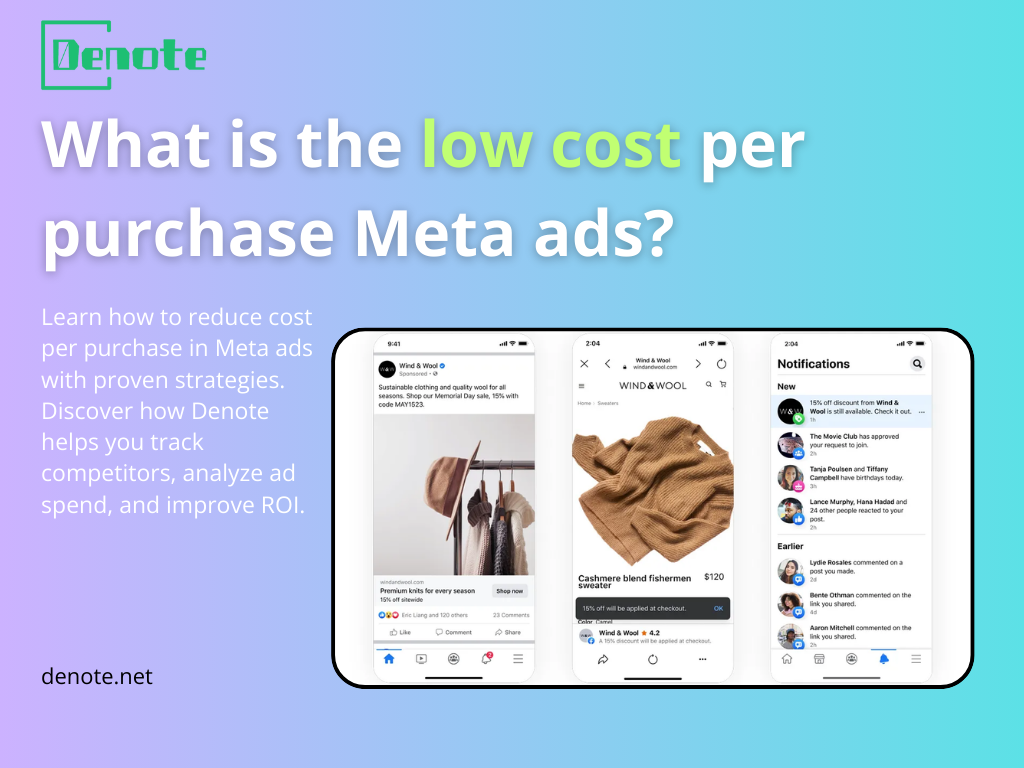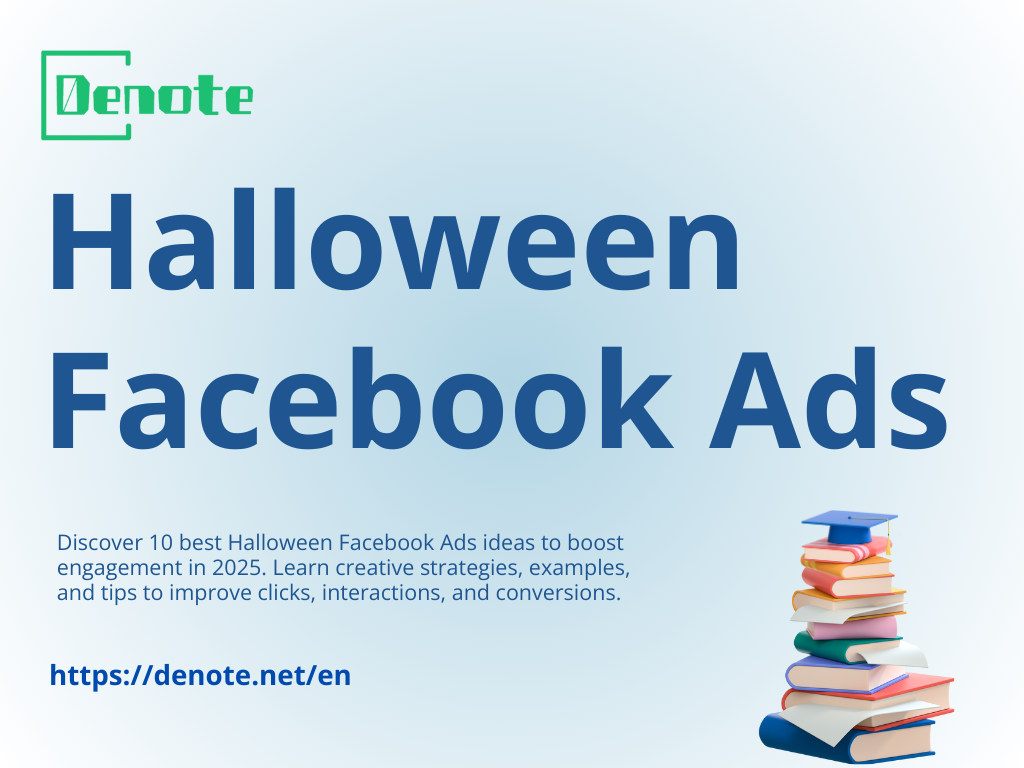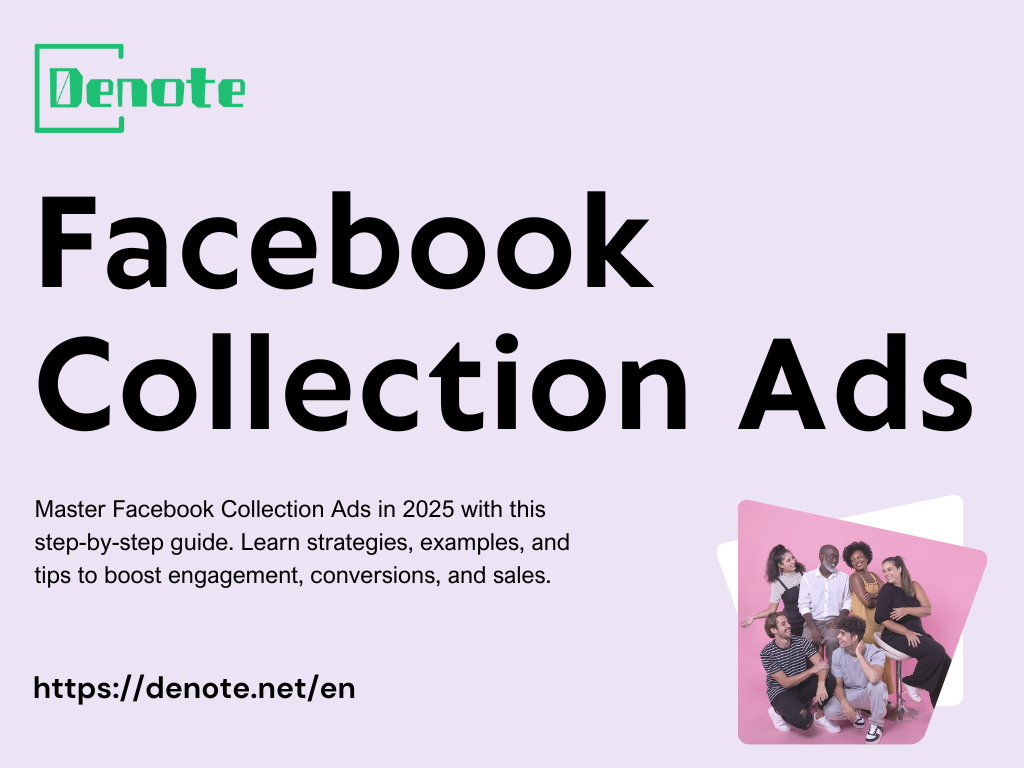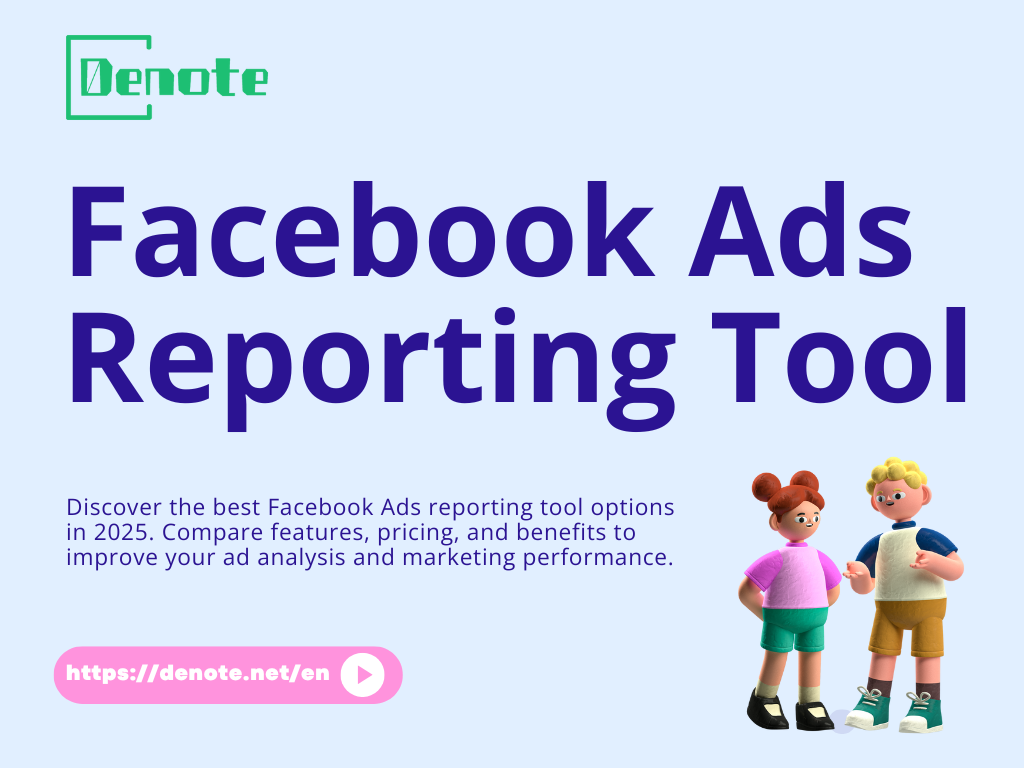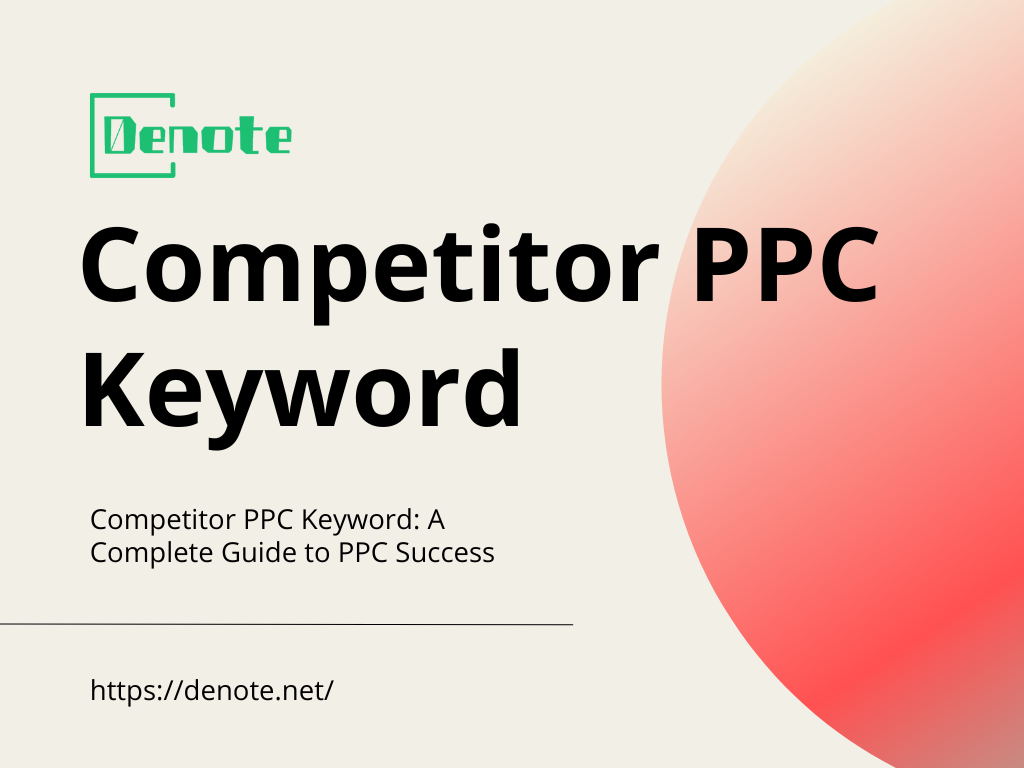Which Format Video Size Reach Better in Facebook?
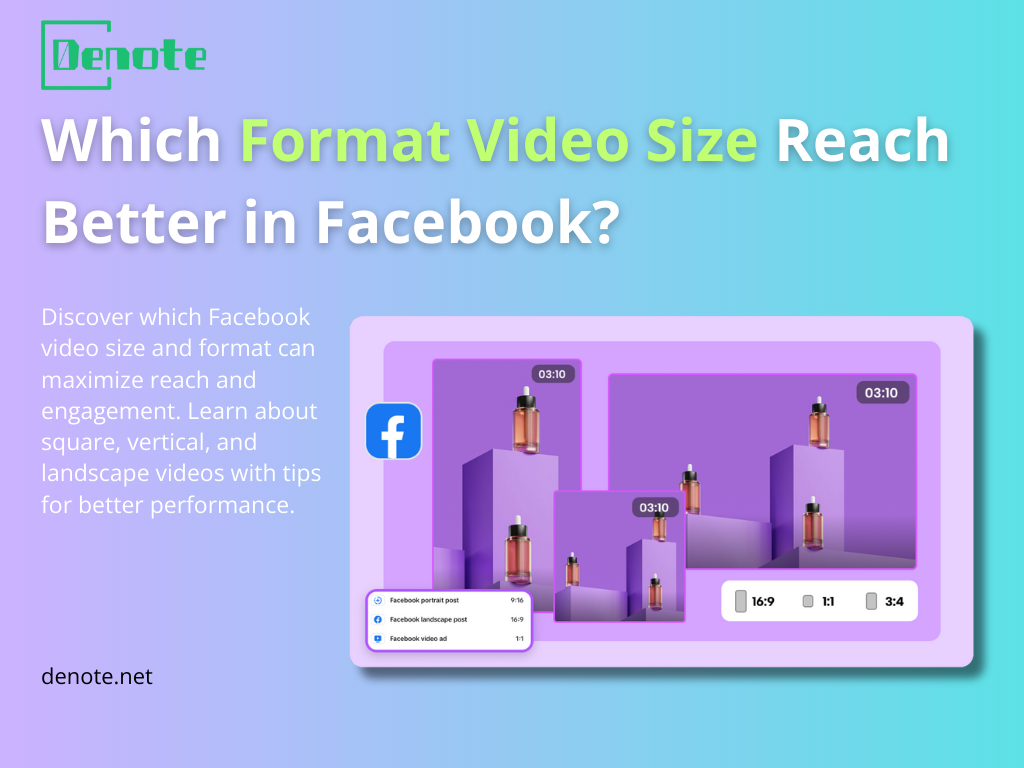
Introduction
Video is the most powerful form of content on Facebook. Every day, users scroll through endless feeds, and the posts that make them stop are usually videos. Meta’s data confirms that videos deliver more engagement, better click-through rates, and stronger conversions compared to static images.
But one question remains: which video format actually performs best on Facebook — landscape, square, or vertical?
The answer is not one-size-fits-all. Different formats work better depending on the campaign goal, the audience, and the placement. That’s where tools like Denote become essential. By analyzing Facebook Ad Library data with Denote, you can see which formats competitors are using, how much they spend, and which creatives perform best.
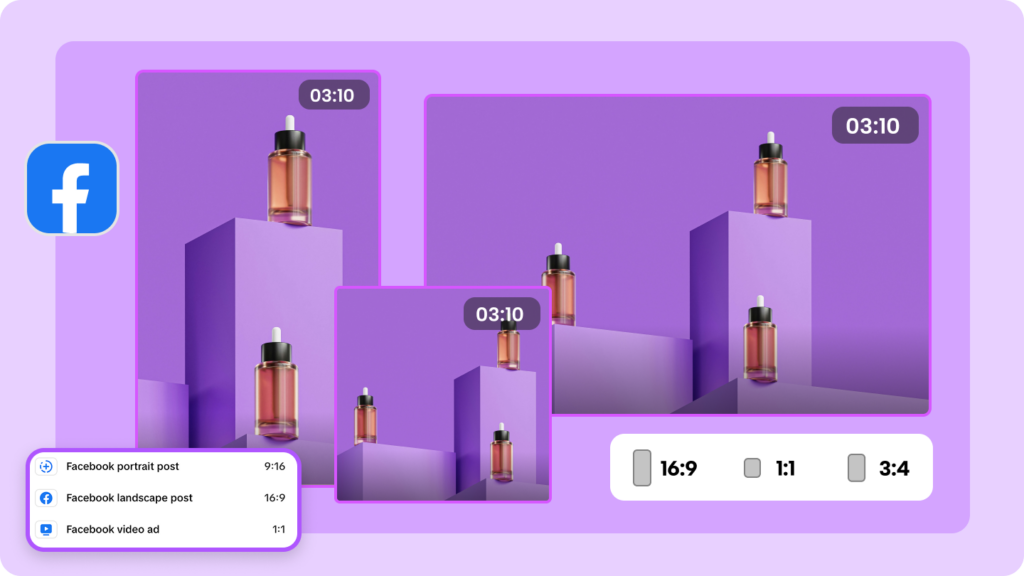
This article will break down video formats, explain which ones reach more people, and show how Denote can help you make smarter, data-driven decisions.
Common Facebook Video Formats Compared
1. Landscape (16:9)
Landscape videos are the traditional horizontal format, widely used on TV and YouTube. They feel natural for long-form content and storytelling, especially when wide visuals are needed.
Pros:
- Perfect for long-form tutorials, webinars, or cinematic storytelling
- Great for repurposing YouTube content
- Works naturally on desktop
Cons:
- Takes up less space in the mobile feed
- Easier to skip on vertical-scrolling screens
- Lower engagement on mobile compared to other formats
Best for: in-depth tutorials, repurposed YouTube videos, wide-angle storytelling.
👉 With Denote, you can check if brands in your industry still invest heavily in landscape videos, or if they are shifting their ad spend toward square and vertical. This helps you decide whether landscape is still worth prioritizing for your campaigns.
2. Square (1:1)
Square videos became popular with Instagram and quickly dominated Facebook feeds. They offer a balanced approach, filling more screen space than landscape but still performing well on desktop.
Pros:
- Occupies more space on mobile feeds compared to landscape
- Works well across both desktop and mobile
- Easy to repurpose from existing content
Cons:
- Less immersive than vertical
- May not perform as well in Stories or Reels
Best for: feed posts, brand awareness campaigns, cross-platform sharing.
👉 Using Denote, you can compare ad performance data to see how much competitors spend on square video ads versus vertical ones. For many industries, square remains a reliable choice for reach and engagement in the main feed.
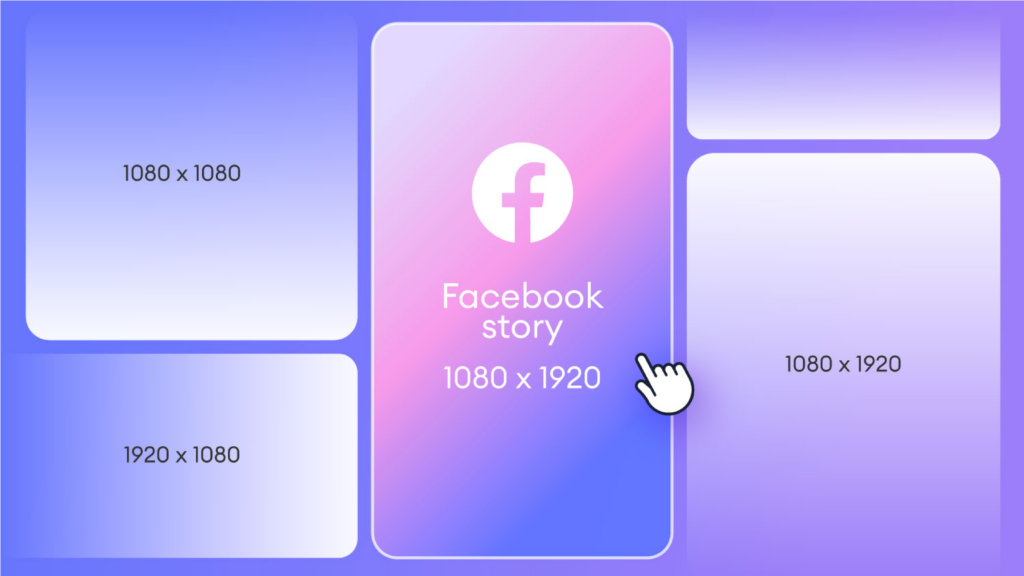
3. Vertical (4:5 / 9:16)
Vertical is the mobile-first video format, designed for the way most users hold their phones. With over 90% of Facebook users browsing on mobile, vertical has become the most natural and effective format for ads, Stories, and Reels.
Pros:
- Maximizes space in mobile feeds
- Best fit for Stories and Reels
- Often delivers the highest engagement rates
Cons:
- Less appealing on desktop
- Requires tailored production (harder to repurpose horizontal content)
Best for: Reels, Stories, short-form ads, mobile-first campaigns.
Denote makes it easy to track competitor investments in vertical formats. For example, if top brands in your niche spend 70% of their ad budget on vertical Reels, that’s a strong signal you should consider prioritizing vertical in your own campaigns.
Which Format Reaches More People on Facebook?
The answer depends on how audiences consume content:
- 90%+ of Facebook users are on mobile.
- Mobile feeds are designed for vertical scrolling, making taller videos (square or vertical) more effective at grabbing attention.
- Studies show vertical videos can outperform landscape videos by 2x in completion rate and engagement.
Square vs. Vertical:
- Square videos perform better than landscape in reach and engagement.
- Vertical videos outperform square when it comes to watch time and Story/Reel placements.
When does landscape still win?
For long-form content or wide visuals, landscape works best. But for mobile-first ads and short attention spans, vertical is the clear winner.
👉 Denote adds clarity here. Instead of guessing, you can analyze your competitors’ video strategy. Are they allocating budget to vertical Reels? Are they still testing square formats in feed ads? Denote’s ad spend insights allow you to adjust your format strategy with confidence.

How to Optimize Video Size for Better Facebook Performance
Even with the right format, optimization matters. Here are essential best practices:
1. Use the Right Specs
- Resolution: At least 1080p
-
Aspect ratios:
- Landscape: 16:9
- Square: 1:1
- Vertical: 4:5 or 9:16
- File size: Keep under 4GB
-
Length recommendations:
- Feed videos: 15–60 seconds
- Ads: Under 15 seconds for higher completion rates
- Stories/Reels: 15–30 seconds
2. Add Subtitles
Most users watch without sound. Subtitles keep your message clear.
3. Focus on Thumbnails
Strong thumbnails boost click-through and watch rates.
4. Start Strong
The first 3 seconds decide retention. Use hooks, motion, or bold text overlays.
5. Test Formats with A/B Testing
Don’t assume one format always works best. Run tests.
Denote helps here too. Instead of wasting ad spend testing blindly, you can use Denote to monitor competitor A/B tests. If they are running both square and vertical versions of the same creative, Denote will reveal where their budget scales up — giving you indirect insight into which format won.
Case Studies and Data Insights
- Buffer’s experiment: Square videos had 35% higher view rates and 100% more engagement than landscape.
- Facebook Ads benchmarks: Vertical videos in Stories often deliver up to 50% cheaper CPM compared to landscape ads.
- HubSpot research: Videos under 90 seconds get the most engagement, especially mobile-optimized ones.
Denote brings these insights closer to home. Instead of relying only on industry averages, you can see what your direct competitors are doing. For example, if you notice a competing e-commerce brand allocating 80% of its video budget to vertical formats, that’s a real-world case study tailored to your niche.
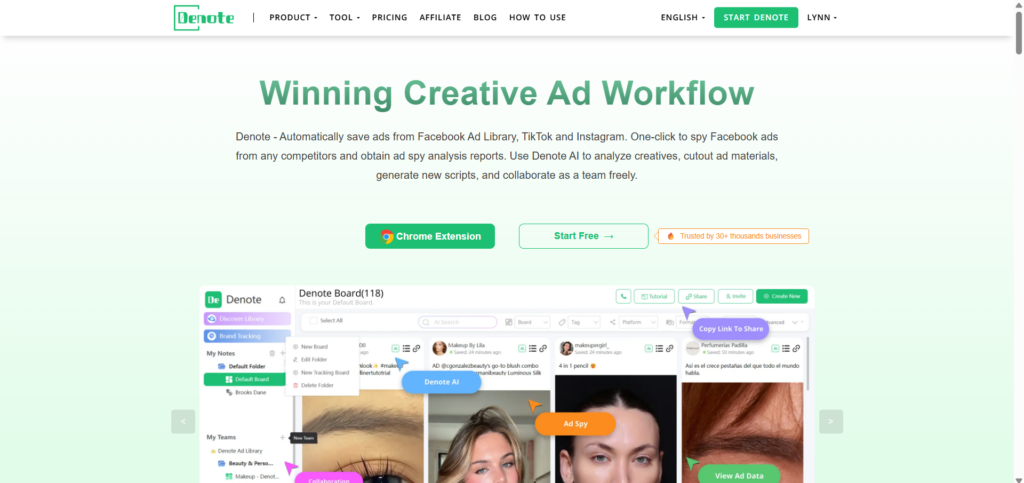
Conclusion
There’s no single “best” Facebook video format. The right choice depends on your content type and campaign goals:
- Landscape (16:9): Best for long-form and wide visuals
- Square (1:1): Great balance for feeds and cross-platform sharing
- Vertical (4:5 / 9:16): Dominates mobile, Stories, and Reels
General recommendations:
- Ads → Vertical
- Feed content → Square
- Long videos → Landscape
👉 With Denote, you don’t have to rely on generic advice. You can:
- See exactly what formats your competitors use.
- Track ad spend across video types.
- Discover which creatives drive the most engagement.
By combining smart creative choices with Denote’s data insights, you’ll maximize both reach and ROI.
Ready to take your Facebook video strategy to the next level?
- Use vertical videos for ads and Stories.
- Post square videos for feed engagement.
- Keep landscape for long-form content.
- And most importantly: leverage Denote to analyze competitor strategies, monitor ad spend, and uncover winning video formats.
👉 Start using Denote today and make data-driven decisions that give you an edge in Facebook marketing.
